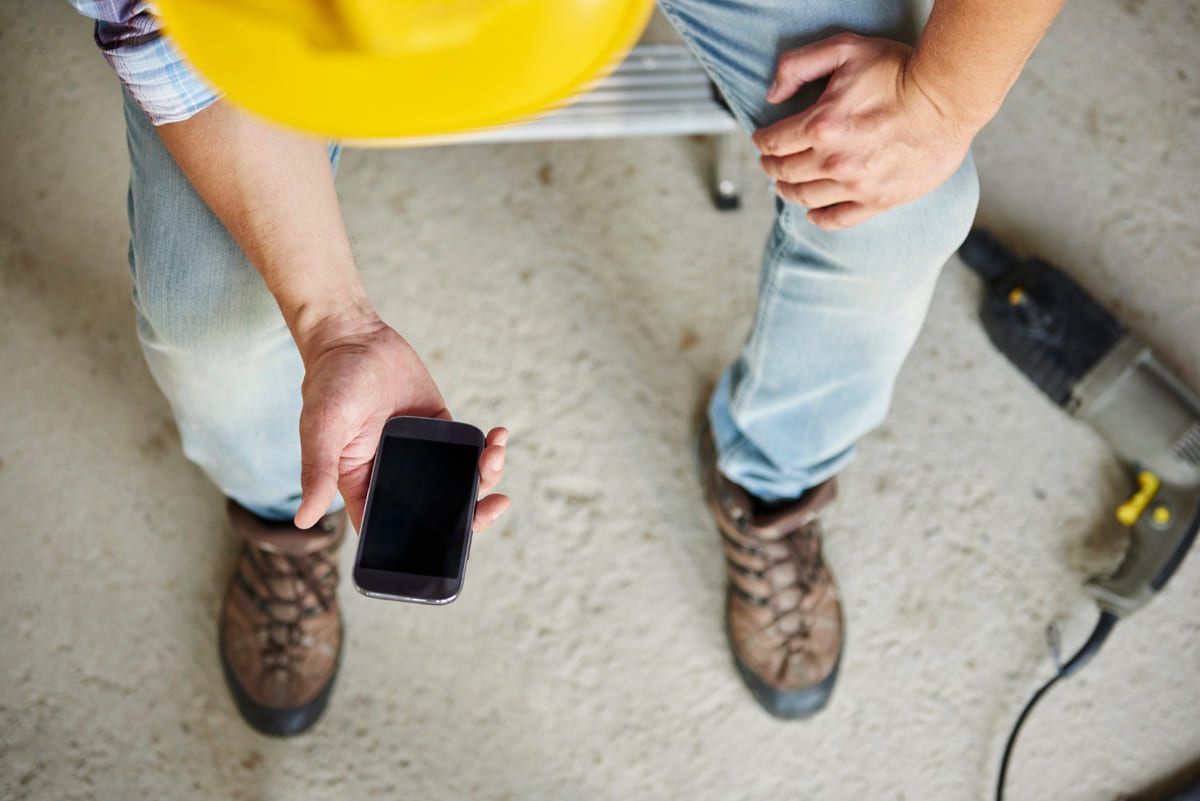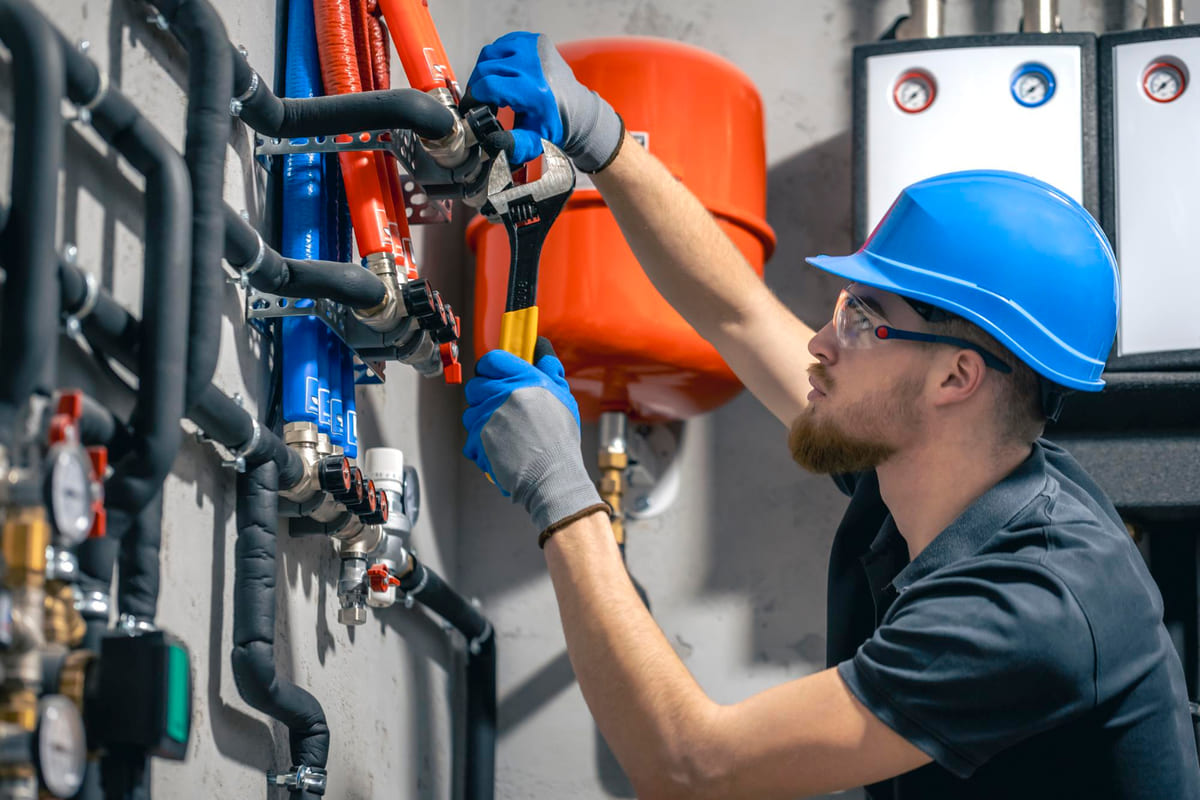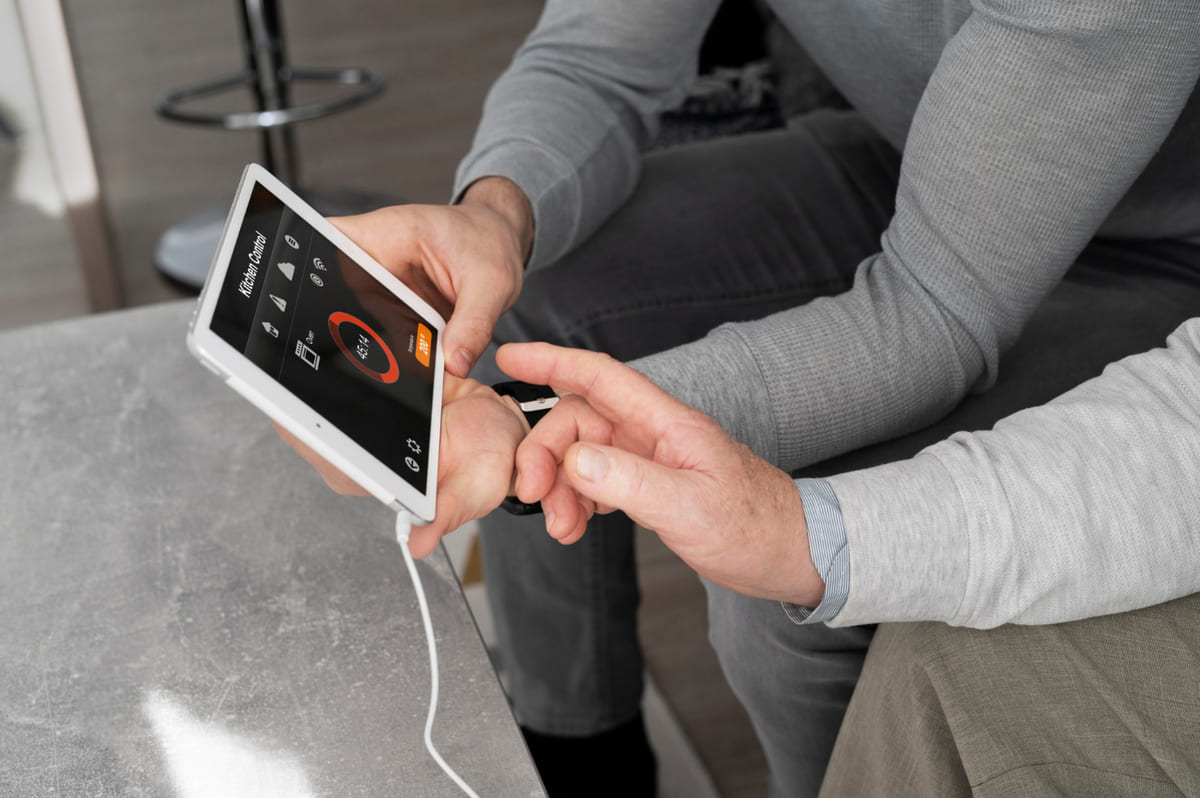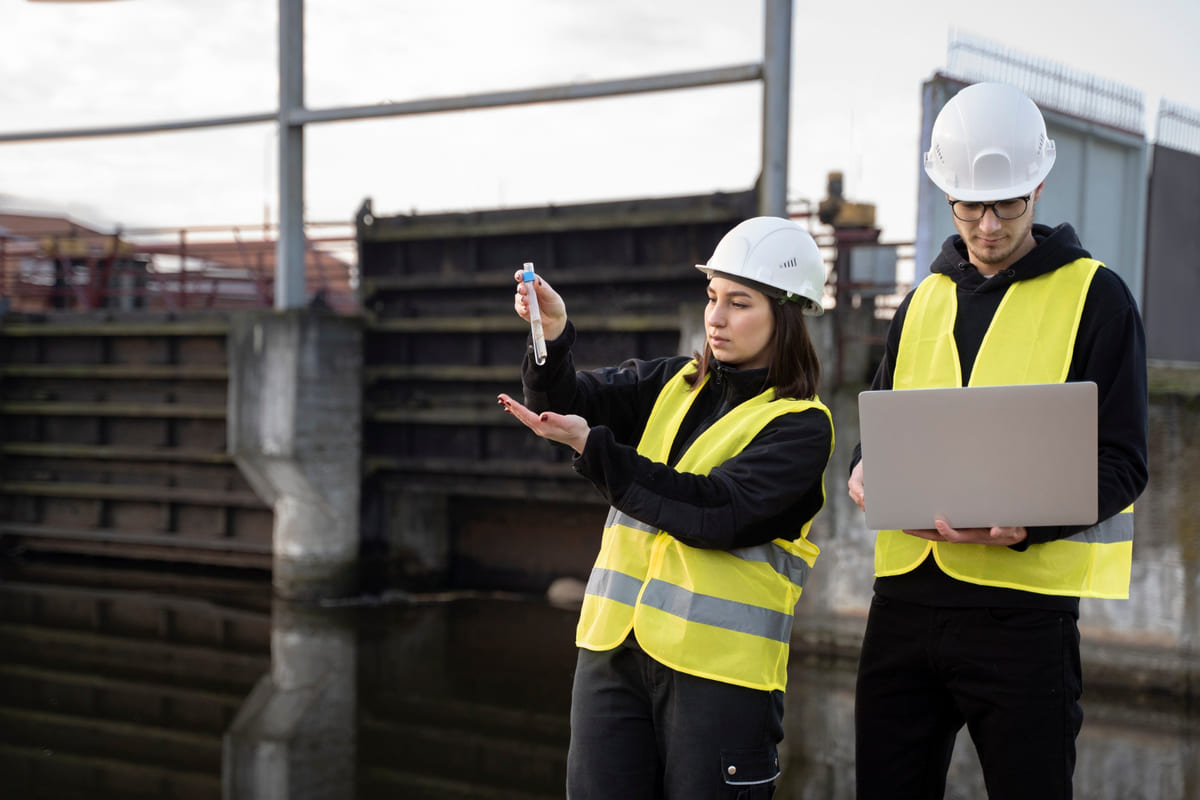Large construction sites are highly vulnerable to water-related issues. Water leakage – whether from external sources like rain or internal sources like plumbing – can disrupt projects and jeopardize safety. In fact, water damage is one of the most frequent and costly causes of loss during building projects, accounting for roughly 30% of construction-related insurance claims. Water Leakage Sensors play a crucial role in 2025. These sensors form the backbone of smart water leak detection systems that can safeguard a project 24/7. By detecting the first signs of unwanted water, they enable intervention before minor leaks turn into major disasters. This section explores how different types of water leakage sensors address the problems outlined above.
Table of Contents
Problems and Consequences
1. External Water Intrusion (Rain, Floods, and Groundwater)
Project Delays and Work Stoppages
Heavy rainfall, storm surges, or high groundwater can inundate an open construction site. Water entering through roof openings or unfinished windows during rain can bring an entire project to a halt. Work must stop to pump out floodwater and dry affected areas, leading to unplanned downtime. Construction schedules suffer as crews wait for flooded excavation pits or concrete slabs to dry. Even after water is removed, additional time is needed to discard and replace water-damaged materials. These delays cascade through the project timeline, often adding significant time to completion. Contractors may face cost overruns due to idle labor and equipment, missed deadlines, and liquidated damages.
-
Example: A sudden overnight downpour floods the foundation trench of a project. Days are lost as the team diverts efforts to pump out water and shore up eroded soil walls, pushing back the schedule and incurring extra costs for cleanup and rework.
Material Damage and Safety Hazards
Standing water on site can ruin construction materials and create hazardous conditions. Exposed building materials like timber, drywall, or insulation get soaked, forcing their replacement. Water can ruin interior finishes, warp wooden frameworks, and wash away freshly poured concrete mix if not protected. Slippery wet surfaces increase the risk of slip-and-fall accidents for workers. There is also danger of electrical hazards if water infiltrates temporary electrical panels, tools, or extension cords. Flooded areas may hide debris or create sinkholes, posing injury risks to personnel and heavy machinery. Additionally, standing water can become a catch basin for contaminants or mud that must be cleaned, complicating site safety.
Water accumulation is not just a nuisance – it actively endangers infrastructure under construction. For example, hydrostatic pressure from excessive groundwater can stress foundation walls. If water pools around foundation excavations without proper drainage, it pushes against retaining walls or basement slabs. Over time this pressure can cause cracking or even collapse of unfinished foundation walls. Erosion of soil from uncontrolled water runoff may undermine scaffolding bases or excavations, threatening structural stability. In extreme cases, a waterlogged excavation can cave in, endangering workers and requiring costly engineering remedies.
Long-Term Structural Risks
Even after a flood is cleared, the hidden consequences can linger. Water that seeps into structural elements can compromise long-term integrity if not addressed. For instance, if moisture penetrates concrete or steel frameworks, it can lead to corrosion of steel reinforcements and weakening of the structure over time. Persistent dampness fosters mold growth on wooden framing or insulation, which not only degrades those materials but also poses health hazards. If water infiltration during construction is not fully dried, it can remain trapped inside wall cavities or under floors, later causing rot or mold in the completed building.
Over the building’s life, these hidden flaws can translate into structural damage such as warping, foundation settlement, or even partial failures. One of the leading causes of foundation problems is water – saturated soils expanding and contracting under footings or exerting lateral pressure on basement walls. Thus, water issues during construction, if not mitigated, can plant the seeds for serious structural defects years down the line.
Suggested article to read: 5 Critical Applications of Vibration Sensors on Large-Scale Sites

2. Internal Leaks (Plumbing Systems and Equipment Failures)
Interior Damage to Finishes and Systems
Modern construction projects involve extensive plumbing, HVAC, and fire protection systems. Leaks from these internal systems during construction can be devastating, especially in later phases when finishes are in place. A burst water supply line, a failed valve, or an accidental sprinkler discharge can dump thousands of gallons into the building. Water will always find the lowest point – seeping through floors and walls – so a single leak on an upper level can cascade to many areas below.
This can submerge drywall, flooring, and electrical equipment on multiple levels. Interior finishes like carpeting, wood flooring, and cabinetry can be irreparably damaged. Beyond materials, critical building systems are at risk: water can short out electrical panels, disable elevators, and damage mechanical equipment. Such leaks often occur when systems are first tested or charged. Industry data shows losses are highest during the final phase of construction when water systems are activated and sensitive finishes are present If a major leak occurs at this stage, it means expensive rework – tearing out and replacing finished work – and a significant schedule setback.
-
Example: In one documented case, an unfinished plumbing fixture in a mechanical room began leaking over a weekend at a new 20-story building. The leak went unnoticed for over a day, spraying water inside walls. By the time crews arrived Monday, water had flooded several floors, submerged electrical generators, and filled elevator shafts. Millions of dollars of damage had already been done. Such a scenario demonstrates how a small leak can escalate disastrously if not detected promptly.
Mold Growth and Indoor Air Quality Issues
When internal leaks soak building interiors, one insidious consequence is mold. Unlike an open-air flood, a hidden leak inside wall cavities or under floors may not be immediately obvious. Moisture trapped in enclosed spaces (like behind drywall or under insulation) creates an ideal breeding ground for mold spores. Within days of a leak, mold can begin to grow, and if unchecked it will spread across framing, sheathing, and HVAC ducts. Mold remediation in a building under construction is costly – affected materials often must be ripped out entirely.
It also raises health concerns for workers and future occupants, potentially delaying the project until the contamination is resolved. Additionally, damp conditions from a leak can degrade indoor air quality, causing unpleasant odors and posing respiratory hazards. These issues undermine the quality and integrity of the finished building, and fixing them often means significant rework. A single unnoticed pipe leak over weeks could force a large portion of completed interior work to be redone, impacting both timeline and budget.
Safety Hazards and Fire Risk
Surprisingly, water leaks can even create fire hazards. If water from a leak reaches live electrical wiring or equipment, it can cause short circuits. Electrical shorts not only damage equipment but can spark fires in extreme cases (for example, water causing an electrical panel to arc). Furthermore, a broken fire sprinkler line or standpipe, as happened in one incident, can depressurize the fire suppression system, leaving the site temporarily unprotected against fires while also causing water damage.
Leaks in mechanical rooms might release hot water or steam, posing burn risks to nearby workers. There’s also the safety risk during the incident itself – a high-pressure pipe burst can release water with force, potentially injuring anyone in the vicinity. All these safety concerns compound the urgency of detecting and stopping leaks quickly on a jobsite.
Cost Overruns and Liability
Water-related incidents almost always carry significant financial consequences. Aside from direct repair costs for damaged work, contractors face debris removal, cleanup expenses, and delay costs that may not be fully covered by insurance. Many builders’ risk policies have high deductibles or exclusions for gradual water seepage, meaning the contractor must pay out-of-pocket for some losses. Rework due to water damage eats into profit margins.
Repeated incidents can also damage a contractor’s reputation for quality. In some cases, water incidents lead to liability claims – for example, if a leak in a construction site causes water damage to a neighboring property or if a slip injury occurs, legal costs could follow. It’s no wonder insurers and industry leaders now view water as “the new fire” in construction risk, given its frequency and impact. Overall, uncontrolled water problems can derail a project’s budget and schedule, making robust water management and leak prevention an essential part of construction planning.
In summary, water intrusion – whether from outside elements or internal system failures – poses a multifaceted threat to construction projects. It can halt work, destroy materials, create safety incidents, and compromise the long-term integrity of the structure. Recognizing these consequences underlines why proactive measures, including advanced Water Leakage Sensors, are increasingly vital on modern jobsites.

Solutions with Sensors
Preventing and mitigating water damage on construction sites requires vigilant monitoring and rapid response. This is where Water Leakage Sensors play a crucial role in 2025. These sensors form the backbone of smart water leak detection systems that can safeguard a project 24/7. By detecting the first signs of unwanted water, they enable intervention before minor leaks turn into major disasters. This section explores how different types of water leakage sensors address the problems outlined above.
It also provides practical examples of sensor technology successfully deployed in large-scale construction environments. Modern systems typically integrate a variety of sensors – point detectors, cable sensors, wireless IoT devices, and even ultrasonic flow sensors – to comprehensively monitor a site. When a leak or flooding condition is detected, these systems instantly alert personnel (via alarms, texts, or emails) and can even trigger automatic shutoff valves to stop the water at its source.
1. Point Sensors (Spot Leak Detectors)
Point leak sensors are compact devices placed at specific high-risk locations to detect the presence of water at that spot. Also known as spot probes or “puck” sensors, they often consist of two metal contacts or electrodes close to the floor. When water or any conductive liquid touches the sensor’s probes, it completes an electrical circuit and triggers an alert.
Point sensors are typically deployed in areas where leaks are likely to start or pool: under plumbing fixtures, inside mechanical rooms, beneath water tanks, or around sump pumps. In a construction context, they can be placed in basements, elevator pits, or under temporary piping joints. Their small size and battery power (in many cases) make them easy to install and move as the site evolves.
Once activated by water, basic models might sound a local alarm (buzzer or siren). More advanced systems connect point sensors into a network that sends instant alerts to site managers. Wireless point sensors are common – many use Wi-Fi, cellular, or LoRaWAN communication to send signals without needing hardwired connections. This is ideal for construction sites where installing permanent wiring is impractical. For example, a palm-sized wireless leak sensor can be left on the concrete floor of each level of a building under construction.
If rainwater or a plumbing leak reaches that floor, the sensor will detect the moisture and immediately communicate an alarm to supervisors’ phones or the site office. The key advantage of point sensors is their simplicity and quick response. They are highly localized – perfect for catching a leak in a specific spot like a drip pan or under a valve. However, they only cover a limited area. If water flows away from the sensor or leaks in a different corner, a spot detector might not catch it until the water spreads.
Use Case – Preventing Major Interior Flooding: Consider a case during the final stage of a hospital construction: contractors installed point sensors in each finished room near plumbing lines. One night, a coupling on a sink supply line in an upper floor failed. Within minutes, the sensor on that bathroom floor detected water and triggered an alert. Site managers were notified via text and were able to rush in to shut off the water supply.
The leak was contained to a small area, with only minor drywall repairs needed. Without the sensor’s early warning, the water could have run overnight, pouring down to several floors below and causing extensive damage. This example illustrates how point leakage sensors serve as vigilant “guardians” in each room, catching leaks at their inception and avoiding a cascade of costly consequences.
2. Cable-Based Leak Detection Sensors
Cable-based sensors (also called leak detection ropes) provide broad area coverage for water monitoring. These sensors consist of long flexible cables – typically a pair of conductive wires wrapped in a water-permeable braid – that can be laid out across floors, around equipment, or along structural perimeters. If any section of the cable comes into contact with water, the liquid bridges the sensing wires and triggers an alarm. Essentially, the whole length of the cable becomes a continuous water detector.
On large construction sites, leak detection cables are extremely useful for monitoring expansive or linear areas that a single point sensor might miss. For example, a 20-meter sensing cable can be run along the base of a temporary retaining wall or around the perimeter of an elevated slab to detect any ingress of water across that entire boundary. Only a very small amount of water (as little as a few millimeters of depth) is needed to activate the cable sensor, so they can catch subtle signs of moisture early.
These cables are often connected to a central panel or monitoring unit that continuously checks for changes in electrical resistance. Many modern systems also support chaining multiple cables to cover hundreds of meters if needed (common in large commercial builds or tunnels). The benefit of cable sensors is the wide coverage and early detection of even minor moisture.
They are ideal for areas where the path of a potential leak is unpredictable – for instance, across a broad flat roof under construction, or winding through a multi-room mechanical floor. A practical deployment on a construction site might be laying a rope sensor around the perimeter of a critical equipment room. If rainwater seeps under the door or a pipe in the corner starts leaking, the water will touch the cable and set off an alarm, even if it’s far from the entry point.
One challenge with rope sensors is they can be sensitive and sometimes trigger false alarms from dust or construction debris (which might mimic moisture or contaminate the cable). They also need to dry out after an event before they are fully functional again, which could leave a short temporary gap in coverage while a wet cable is serviced. Despite these minor drawbacks, cable-based leak detectors are a powerful tool for large sites. They effectively form a water-sensitive fence around high-value areas.
Use Case – Early Warning Around Foundations: On a large campus construction, the project team was concerned about groundwater seepage into the foundation excavation, especially during heavy rains. They deployed a durable leak detection cable along the bottom perimeter of the excavation trench and tied it into a wireless transmitter. During a weekend storm, groundwater began infiltrating one corner of the trench. The cable sensor detected the rising moisture at 2 A.M.
and sent an alert to the site’s control center. An on-call crew responded immediately, activating extra pumps to remove water and reinforcing the shoring at that corner. This proactive response, enabled by the cable sensor’s early warning, prevented a potential trench collapse and kept the foundation work on schedule. The only evidence on Monday morning was a damp section of soil – a problem that, thanks to sensors, never escalated into a full-blown emergency.

3. Wireless IoT Monitoring and Integrated Alarms
Modern leak detection solutions leverage networks of wireless sensors to cover an entire construction site. Wireless water leakage sensors can be a mix of the point and cable types described above, all communicating through radio frequency (RF) signals. The lack of wired infrastructure is a major advantage on construction sites: battery-powered sensors with built-in transmitters can be installed in hard-to-reach or moving locations (such as parts of a building that are under construction and will later be removed or relocated) without running power or signal cables. They create a mesh or star network that reports to a central gateway on-site, or directly to a cloud platform.
As soon as any sensor detects water, it sends a signal through the network to trigger alarms and notifications. A leading example is a system where a network of wireless sensors is installed throughout a building under construction – in boiler rooms, kitchens, bathrooms, pump rooms, etc. These sensors immediately communicate the precise location of a leak through a secure RF network to a central hub. From there, notifications (emails, SMS, phone calls) are sent out in real time to responsible personnel.
Wireless multi-sensor units often come with additional features: many also monitor temperature and humidity, which can help detect conditions leading to condensation or freezing (frozen pipes can burst and cause leaks). The sensors typically have long-life batteries and communicate periodically to indicate their status, ensuring the system is “always on, always sensing”. Importantly, these systems can integrate with automated shutoff valves. At the first hint of a leak, the system can command a motorized valve to close the main water inlet or a specific branch line, stopping the flow of water. This kind of rapid automatic response is critical in limiting damage; it effectively takes human reaction time out of the equation.
-
Example: A high-rise office project deployed an IoT leak detection system with dozens of wireless sensors during construction. Late one night, a sensor under a large wet/dry vacuum (being used to cure concrete floors) detected water spreading across the floor – a hose had dislodged, releasing water. Immediately, an on-site alarm sounded and text alerts went out. The system had also been configured with an electric shutoff valve on the temporary water supply line; sensing the abnormal flow, it closed the valve automatically. By the time the on-call manager arrived, the water release had already been stopped after only a few gallons. The floor was mopped up in an hour with no lasting damage. This scenario shows how a network of wireless leakage sensors, coupled with smart controls, can respond to a leak within seconds – far faster than any night watchman or periodic inspection could.
Wireless sensor systems greatly enhance both safety and efficiency on construction sites. They ensure leaks are caught whether or not workers are present, even in the middle of the night or during holidays. The continuous monitoring and instant alerts mean the project team can have peace of mind that water threats are under surveillance. This proactive stance can save huge costs. A recent industry study comparing projects with and without smart water monitoring found that sites equipped with such technology experienced 75% fewer water-damage insurance claims than unprotected sites. In financial terms, water damage losses were reduced by around 90% on the sensor-equipped projects. These numbers underscore the value of an integrated, wireless leak detection approach in construction.
4. Ultrasonic Flow Sensors and Automatic Shutoffs
Not all leaks are detected by water touching a sensor – some are caught by monitoring water flow inside pipes. Ultrasonic flow sensors are a high-tech solution that can identify leaks by analyzing water movement within plumbing systems. These devices clamp onto or integrate into the piping and use ultrasonic waves to measure the flow rate without any moving parts. By transmitting ultrasonic pulses upstream and downstream in the pipe, they can very accurately measure how much water is flowing and at what speed.
The sensor’s software learns the normal water usage patterns of the construction project (for example, it knows that at 2 A.M. there should be virtually no water running). If it detects an irregular flow – say a continuous flow when all taps should be off – it interprets that as a possible leak. Many ultrasonic leak detection systems will then automatically trigger an alarm and can close a motorized shutoff valve to stop water supply when a leak is suspected.
For construction sites, ultrasonic flow sensors are typically installed on the main water feed or on critical distribution lines. They are especially valuable during hydrostatic testing of plumbing, when the system is pressurized and even a small crack will result in a measurable flow. Compared to traditional mechanical water meters, ultrasonic sensors have the benefit of no pressure drop and high sensitivity to low flow rates. They can catch a slow, continuous leak that mechanical meters might not register. Additionally, these smart flow sensors often provide data on water temperature and pressure, helping detect other anomalies like pipe freezing or bursts. They are generally part of an IoT system, sending data to cloud dashboards and smartphones in real time.
Use Case – Detecting Hidden Pipe Leaks: During the construction of a large shopping mall, the fire suppression system (sprinkler network) was charged for testing. Engineers installed an ultrasonic leak detection unit on the main sprinkler line. Overnight, when no water usage was expected, the sensor detected a small but steady flow of water – indicating a leak somewhere in the miles of new piping. It immediately sent alerts and automatically shut the supply to that zone. Upon investigation, the team found a loose coupling in an overhead line that was dripping.
Thanks to the ultrasonic sensor, the leak was caught at an early stage (before the coupling completely failed) and the section was repaired the next morning. Without this system, the coupling could have blown off, potentially dumping a large volume of water through the ceiling. This example highlights how flow-based sensors add a critical layer of protection by monitoring the water from within the system, complementing the point and cable sensors watching from the outside.

5. Successful Implementation in Large-Scale Projects
The combination of these sensor technologies can dramatically reduce the risk of water damage on construction sites. Many large-scale projects in recent years have reported successful outcomes by integrating leak detection systems:
-
High-Rise Building Project: A 50-story commercial tower project outfitted each floor with wireless spot sensors and monitored the main water feeds with flow sensors. During construction, the system detected two incidents – one where a mechanical room valve started leaking and one where rainwater entered through an unsealed facade joint. In both cases, the alerts allowed a response within minutes. The project finished without any major water damage, avoiding what historically might have been hundreds of thousands of dollars in losses.
-
Case Study – $6 Million Loss Averted: In one documented instance, a new construction site equipped with an AI-based leak detection platform prevented a catastrophe. An unfinished plumbing line began leaking in a mechanical room. The smart sensor system (which included flow monitoring) immediately caught the abnormal water flow. It made an automated phone call to the site supervisor and triggered an alarm, prompting an immediate fix. By reacting early, the company saved an estimated $6,000,000 in water damage that would have occurred if the leak had gone unnoticed. This real-world case demonstrates how sensors directly translate to cost savings and safety – a single leak, if unchecked, could have ruined critical equipment and interiors, causing massive delays, but with sensors it became a non-event.
-
Infrastructure and Civil Works: Even on large civil construction sites (like tunnels or hydro projects), water leak sensors have proven valuable. For example, in a subway tunnel construction, teams laid sensing cables along the tunnel floor while it was being excavated. These cables gave early warnings of water inflows from surrounding soil layers, allowing engineers to proactively inject sealant and adjust dewatering pumps. This prevented sudden flooding in the tunnel and protected workers and equipment. It also helped maintain the schedule by avoiding unplanned flooding interruptions.
These examples reinforce a key point: water leakage sensors turn a reactive problem into a manageable, controlled risk. By providing real-time visibility of water intrusion, they enhance safety (workers aren’t caught by surprise by floods or slippery conditions) and improve efficiency (projects don’t suffer multi-week delays for dry-out and rework). In 2025, many contractors and insurance providers view such sensor systems as an essential part of construction risk management. With the cost of sensors relatively low compared to potential damage, the return on investment is clear.
FAQs
How do water leakage sensors work on construction sites?
Answer: Water leakage sensors on construction sites function as an early warning system for unwanted moisture. Spot sensors use exposed electrodes that trigger an alarm when water bridges them, indicating a leak or flood at that location. Cable sensors detect water along their entire length, so if any portion gets wet, an alert is sent. More advanced systems include ultrasonic flow sensors inside pipes that monitor water flow; if a pipe starts leaking (causing unusual flow patterns), they signal an alarm and can automatically shut off water supply. All these sensors are typically connected (often wirelessly) to a central hub.
When a sensor detects water, the hub issues immediate notifications (via sirens, text/email alerts, etc.) so the construction team can respond quickly. In essence, they continuously monitor the site for leaks or flooding and provide real-time alerts to prevent minor water issues from escalating. This around-the-clock monitoring is crucial on sites, especially during off-hours, to catch problems that would otherwise go unnoticed.
What problems do Water Leakage Sensors solve in construction projects?
Answer: Water leakage sensors directly address a range of water-related problems on construction projects. Firstly, they prevent costly water damage by detecting leaks from plumbing, equipment, or weather ingress before significant flooding occurs. This helps avoid destruction of materials (like drywall, insulation, flooring) and safeguards critical systems (electrical panels, machinery) from water exposure. Secondly, sensors improve safety by alerting teams to standing water or flooding that could cause slip hazards or electrocution risks. Workers can then be kept away from danger until the area is secured.
Thirdly, these sensors minimize project delays – by catching water intrusions early, they reduce the downtime needed for cleanup and repairs. For example, rather than halting work for a week to dry out a flooded area, a project might only pause for a few hours to mop up a minor leak caught early.
Which types of water leakage sensors are best for large construction sites?
Answer: Large construction sites benefit from a combination of sensor types, each guarding against different water threats. Point leak sensors (spot/puck detectors) are best for pinpoint monitoring in specific areas – for instance, under a potential leak point like a pipe junction or in a basement sump.
These are inexpensive and easy to deploy in multiple locations. Cable (rope) sensors are ideal for covering wide areas or perimeters; a single cable can detect water along an extensive line (great for around building foundations, exterior walls, or across big floor spans). Ultrasonic flow sensors are highly effective for monitoring the integrity of pressurized water lines; on a big site with complex plumbing, these will catch leaks in pipes by analyzing flow abnormalities and can automatically shut off water to prevent major breaks.
Is it true that water damage is a leading cause of construction delays and losses?
Answer: Yes, it’s true – water damage is consistently cited as a leading cause of delays and financial losses in building construction. Industry insurers report that water-related incidents (from leaks to floods) are among the most frequent and expensive claims during construction. For example, studies have found that roughly 30% of builders’ risk insurance claims are due to water damage events on worksites. These incidents can happen at any stage: early on due to weather and groundwater, or later from plumbing and sprinkler systems. The consequences often include significant project delays. Work may have to stop for days or weeks to pump out water, dry structures, and replace damaged materials, pushing back completion timelines.
Conclusion
Water leakage sensors have emerged as indispensable tools for enhancing safety and efficiency on construction sites. By addressing both external water ingress and internal leaks, they fill critical gaps in traditional monitoring. Construction projects inherently face water risks – from weather to plumbing – but sensors provide the early detection and automated response needed to prevent minor issues from becoming major disasters. The consequences of uncontrolled water are severe: work stoppages, damage, safety incidents, and structural compromises. Sensor technologies (point detectors, cable systems, wireless networks, and ultrasonic flow monitors) directly tackle these challenges by continuously watching over the site. They alert teams to problems in real time and can even intervene by shutting off water, dramatically reducing damage.
Resources:
-
Munich Re / HSB Engineering Insurance. (n.d.). Water damage on construction sites – A guide to loss prevention.
-
AXA XL Risk Consulting. Vierling, J., & Dycian, Y. (2020). Don’t go with the flow: Water is the new fire in construction risk.
-
Construction Dive. (2024). Builder’s risk claims reduced by 75%. (Sponsored content by WINT Water Intelligence). Available at:
-
CMR Electrical. (2023). Types of Leak Detection Sensors: A Comprehensive Comparison.
-
Alert Labs. (2022). New Construction Site Avoids $6,000,000 in Water Damage. (Customer case success story).
-
IRMI / Nationwide Mutual Insurance. (2024). Protect Your Construction Projects and Bottom Line from Water Damage.
-
Laiier Inc. (2023). The 4 Types of Water Leak Detectors a Smart Building Needs.
For all the pictures: Freepik
Suggested article for reading:
IoT Building Automation Systems; 2025 Ultimate Guide
How Predictive Maintenance IoT Reduces Unplanned Downtime in Construction: 4 Case Studies
5 Essential IoT Applications in Building Automation Systems
Top 7 IoT Building Automation Trends Transforming Smart Buildings
7 Steps to Strengthen Building Automation Cybersecurity




